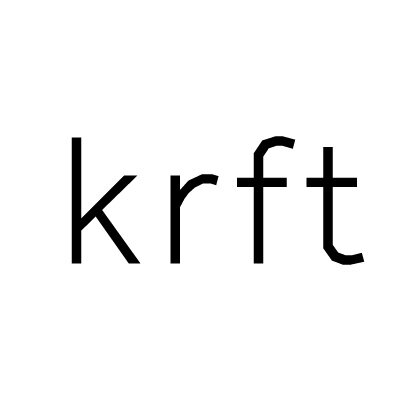We are an Amsterdam based architecture studio, working in The Netherlands, Belgium and the United Kingdom.
krft is driven by incorporating societal urgencies in our practice, yet trying to counter them in timeless and robust ways. Their designs are embedded in a historical context, are connected to existing urgencies and try to explore future potential. Preferably all at once.
Our designs are the result of an utmost sensibility for client, citizens and context, celebrating the beauty of things made, driven by the search of magic in material constellations.
Partners / Directors
Oscar Vos and Thomas Dieben met at the TU Delft and started their cooperation in 2008, working on their first project Dutch Mountain with Sanne Oomen.
Oscar Vos (1979) graduated in architecture at the TU Delft in 2005. After working in Germany at Behnisch & Behnisch he moved to Merkx+Girod in Amsterdam in 2005. In 2008, he co-founded denieuwegeneratie, with Sanne Oomen and Thomas Dieben, which evolved into krft in 2015. Next to his studio activities, Oscar is also a member of Urban Quality Team in both Arnhem and Deventer.
Thomas Dieben (1980) graduated in architecture at the TU Delft in 2005. After studying at La Villette and working in Paris at Jean Nouvel, he joined Claus & Kaan Amsterdam in 2006. In 2008, he co-founded denieuwegeneratie, with Sanne Oomen and Oscar Vos, which evolved into krft in 2015. Next to his studio activities, Thomas is a tutor at the TU Delft.
Team
Our team consists of a group of designers, who share the same spirit of sensitive and sensible architecture. We work in small teams, very close to our clients.
Michael van Geene
Niamh McInerney
Matthew Riches
Sohila Elshenawi
Heather Stimpson
Alexander Beeloo
Thom Schreuder
Hán Li
Evelien Kranstauber
John Rous
Mohamad Haj Kasem
Eva Bartens
David Nyoo
Roberto Oliveira
Suzanna Ruis
Liana Casey
Former team members are: Thomas Fell Rubio, Lilian Rens, Leon van Ouwerkerk, Dees Verweij, Tim Arends, Sebastiaan van Schajik, Javier Pose Bazarra, Laurens Schuitemaker, Anouck Badina, Frederico Rosson, Ashleigh Sullivan, Luke van der Vorst, Kelly Vink, Michael Brennan, Artjom Morozov, Aneta Ziomkiewicz, Nono van der Veen, Remko van der Vorm, Alvaro Laanen Baca, Mart-Jan Spaans, Valentina Piras, Matilde Scali, Oscar de Blanken, Lous Kleingeld, Antonio Nieto, Elise Laurent, Sandra Bjorklin, Farah Agarwal, Jasper Spigt, Kenya Sato, Tamara Ivanovic, Jordy Herfst, Dayanara Franken.
Circular Manifesto
krft supports the Circular Manifesto as stated by the BNA (Royal Institute of Dutch Architects) and the governmental ambition Nederland Circulair 2050.
We believe that circular thinking should be an integral and inseparable part of the architectural practice. The rising generation of young architects should take a lead in proclaiming this and take exemplary stand in forms of new practice on this matter.
Finding a focus in the broad practice of circular architecture is a matter of choices to take on many levels - space, material and energy - but also in process - the construction and use of buildings. We use a broad approach to circular thinking, in which matters outside of the realm of the architectural object are considered evenly important.


















